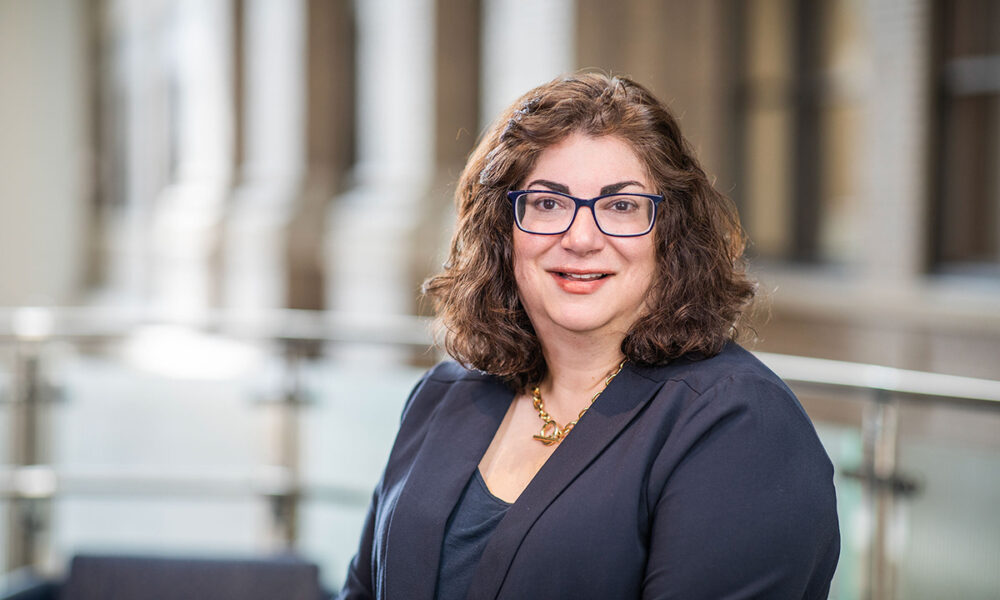Dr. Pamela K. Woodard, head of the Department of Radiology at Washington University School of Medicine in St. Louis, has been elected to the National Academy of Medicine, a prestigious recognition in the field of health and medicine. This honor is awarded to individuals who have demonstrated exceptional professional achievement and a strong commitment to service. Woodard is among 100 new members elected in 2024, highlighting her significant contributions to medical imaging and education.
As the Elizabeth E. Mallinckrodt Professor of Radiology and director of the Mallinckrodt Institute of Radiology, one of the largest academic radiology departments in the United States, Woodard has been instrumental in advancing diagnostic techniques. Her leadership has positioned the institute as the third highest in funding from the National Institutes of Health (NIH), reflecting her impact on the field.
Woodard’s election acknowledges her distinguished career as both a researcher and clinician. She has pioneered developments in cardiac imaging techniques, enhancing the ability of healthcare professionals to diagnose and manage cardiovascular diseases. Her work not only advances imaging science but also plays a crucial role in educating the next generation of physician-scientists.
“Dr. Woodard’s groundbreaking work in cardiothoracic imaging and her commitment to training radiologists have advanced imaging science and the practice of radiology in exceptional ways,” stated David H. Perlmutter, MD, Executive Vice Chancellor for Medical Affairs at WashU Medicine. “Her election to the National Academy of Medicine is a well-deserved honor that reflects key contributions to improving patient care in the area of radiology.”
One of Woodard’s notable accomplishments includes the clinical translation of a technique to reduce motion artifacts in MRI scans caused by patient movement during breathing. This advancement has enabled the use of three-dimensional MRI imaging for diagnostic scans in cardiac patients, with the first implementation occurring at WashU Medicine.
Additionally, Woodard has led initiatives to develop tools that assist in characterizing atherosclerotic plaques—deposits in blood vessels that can lead to heart attacks and strokes. Her team created a nanoparticle-based PET imaging radiotracer that selectively targets specific receptors in these plaques, potentially allowing physicians to better assess stroke risk in their patients.
A pioneer in the use of multidetector spiral CT for detecting pulmonary embolisms, Woodard developed techniques for diagnosing potentially life-threatening blood clots in the lungs. This method, which she worked on during her residency at Duke University, is now recognized as the standard of care.
In addition to her research, Woodard is deeply committed to education. She has led the Training Opportunities in Translational Imaging Education and Research (TOP-TIER) program at the Mallinckrodt Institute since its inception in 2017. This NIH-funded initiative trains radiology residents and fellows in advanced translational imaging research.
Woodard’s accolades include being a fellow of the American Association for the Advancement of Science, the American Institute for Medical and Biological Engineering, the American College of Radiology, and the American Heart Association. She received the Gold Medal from the North American Society for Cardiovascular Imaging in 2025, the Outstanding Researcher Award from the Radiological Society of North America in 2021, and the Distinguished Investigator Award from the Academy of Radiology and Biomedical Imaging Research in 2015, where she currently serves as president. In 2024-2025, she held the presidency of the American College of Radiology.
Woodard earned her bachelor’s and medical degrees from Duke University, followed by an internship in internal medicine at the University of North Carolina at Chapel Hill. She completed her radiology residency at Duke before joining the WashU Medicine faculty in 1997 for a clinical fellowship in cardiothoracic radiology.
Washington University School of Medicine is a leader in academic medicine and biomedical research, with over 3,000 faculty members. The institution’s NIH research funding is the second largest among U.S. medical schools, having grown by 83% since 2016. WashU Medicine dedicates over $1 billion annually to innovative research and training. Its faculty practice consistently ranks among the top five in the country, with more than 2,000 physicians practicing across 130 locations, including Barnes-Jewish and St. Louis Children’s hospitals.
The recognition of Dr. Woodard by the National Academy of Medicine not only celebrates her contributions but also emphasizes the vital role of innovation and education in advancing healthcare.







